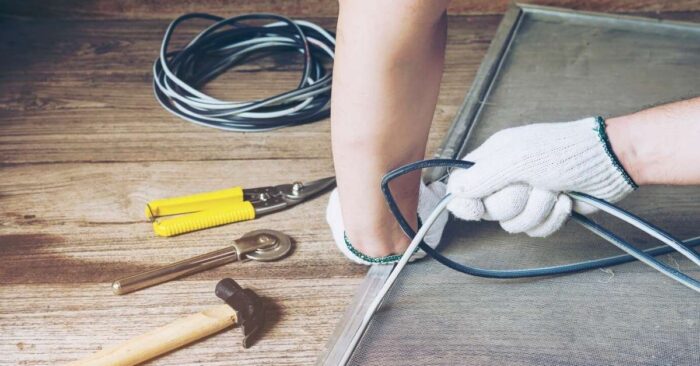Fiber optic installation – costs, procedure & tips

But how exactly does a fiber optic installation work, what are the costs, and which providers offer the best conditions? In this comprehensive guide, you will learn everything you need to know to find the right fiber optic connection for your home. Choosing fiber optics not only means a stable and fast internet connection but also a future-proof investment in your home. Especially in today’s digital world, where streaming, home offices, and smart home devices play an increasingly important role, a powerful connection can make a significant difference.
What Does Installing Fiber Optics Mean and Why Is It Worth It?
Fiber optics is a powerful technology that enables ultra-fast internet. Compared to traditional copper lines, it offers significantly higher bandwidth and a more stable connection, whether you’re streaming in the living room or working in your home office. Thanks to optical signal transmission, there are virtually no delays or fluctuations in internet speed. A fiber optic connection can save costs in the long run and increase the value of your home. Another advantage is that fiber optic cables are less susceptible to electromagnetic interference, meaning you can enjoy a consistent and reliable connection. Fiber optics is particularly worthwhile for families or shared households where multiple people use the internet simultaneously.
The Complete Process of Fiber Optic Installation – How It Works
Fiber optic installation occurs in several steps. First, availability must be checked, then the cable is laid to the house connection box. In the next step, the connection is established inside the building, and the router is connected. After activation, you can start using high-speed internet. Each of these steps requires careful planning and coordination with the network operator or chosen provider. It is especially important to schedule the installation appointment early, as the demand for fiber optic connections is steadily increasing. In some regions, additional construction work may be necessary to lay the fiber optic cable to the building, which can affect the total cost and installation duration.

Preparation and Checking Fiber Optic Connection – Is Your House Ready?
Before installing fiber optics, you should check whether your home is already connected to the fiber optic network. You can check fiber optic availability online. If no connection is available, the cables need to be installed. It is important to determine whether a fiber optic cable has already been laid on your street or if a completely new connection is needed. In some cases, the network operator covers the costs for the initial installation, while in others, the homeowner is responsible. The location of your house can also play a role: in densely populated areas, fiber optics is more likely to be available, whereas in rural areas, you may have to wait longer for a connection.
| Step | Action Required |
|---|---|
| 1. Check | Verify fiber optic availability |
| 2. Plan | Contact provider and plan the process |
| 3. Schedule | Set installation appointment |
| 4. Install | Have fiber optic socket installed |
How Is the Fiber Optic Connection Installed in the House? – Step by Step
Establishing the House Connection: The fiber optic cable is laid from the property boundary to the building. In most cases, construction work is required to bury the cable underground. It is usually guided through a protective conduit to prevent damage.
Installing the House Connection Box: This is where the connection to the network ends. The house connection box is typically installed in the basement or a utility room. It serves as the interface between the public network and your home.
Mounting the OTO Socket: The fiber optic socket, known as the Optical Telecommunications Outlet (OTO socket), is installed inside the house. This serves as the connection point between the fiber optic network and your router.
Connecting the Router: The router is connected to the OTO socket. Choosing the right location for the router is important to ensure optimal Wi-Fi coverage throughout the house. Sometimes, an additional repeater is needed if the signal is not strong enough. This device amplifies the signal so that you have optimal network access throughout the house.
Activation: The connection is tested and activated. This ensures that the optical signal is correctly received and that the connection is fully functional.
Who Installs the Fiber Optic Connection? – Providers and Options Compared
The fiber optic installation is carried out either by the network operator or a certified technician. Providers such as Salt, Wingo, and Yallo offer different rates and installation costs. It is also possible to hire an independent service provider for the installation if your chosen internet provider does not offer an installation service. In some cases, providers offer special discounts or free installations if you commit to a long-term contract.
| Provider | Installation Cost | Special Features |
|---|---|---|
| Salt | from CHF 99 | High bandwidth |
| Sunrise | from CHF 149 | Bundled packages available |
| Yallo | from CHF 89 | Budget-friendly alternative |
Installing Fiber Optics Yourself or Hiring a Professional? – Pros & Cons
| Option | Advantages | Disadvantages |
|---|---|---|
| Self-installation | Cost-effective, flexible | Risk of errors |
| Installation by provider | Professional setup | Higher costs |
Fiber Optic Installation Costs in Switzerland – What to Expect
The cost of fiber optic installation varies by region and provider. Typically, costs range from CHF 100 to CHF 500. Additional costs may arise for the fiber optic socket or specific installation requirements. The exact costs also depend on the existing infrastructure and the length of the required cable. In some cases, municipalities or cantons may partially cover the cost of the house connection to promote fiber optic expansion.

Conclusion
Installing fiber optics on your property is worth it for anyone seeking a fast and stable internet connection for Wi-Fi or LAN in their home. Costs vary depending on the provider and location. Investing in a high-performance internet connection provides long-term benefits such as stable transmission rates and higher living quality. It is, therefore, advisable to compare offers early and choose the right provider.
Frequently Asked Questions
The installation involves multiple steps: connection to the fiber optic network, installation of the OTO socket, and activation of the network.
Costs vary by provider and location. Basic installations are sometimes covered by providers like Sunrise, but additional work may cost CHF 500–2000.
No, a certified technician must install it to avoid damage to the fiber optic cable.
Certified partners install the connection on behalf of providers such as Swisscom, Sunrise, Salt, Yallo, and Wingo.
Availability checks are available on provider websites. Alternatively, you can check if light is emitted from the fiber optic socket, indicating an active connection.
It takes about 4 to 6 weeks, depending on construction requirements.
Common issues include missing cabling, access problems in multi-family houses, or weak signal strength.










